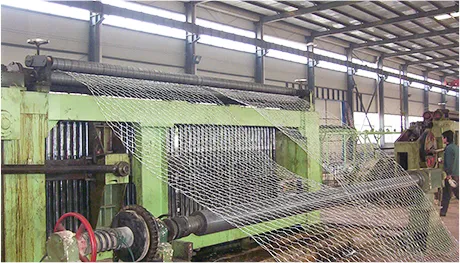-
 Phone:
Phone: -
 Email:
Email:

rockfall netting
Rockfall Netting A Vital Safety Measure for Slopes and Cliffs
Rockfall netting is an essential method used in geotechnical engineering to ensure the safety and stability of mountainous terrains and steep slopes. As urban developments expand into more rugged landscapes, the need to manage rockfall hazards becomes increasingly critical. Rockfall events can cause significant damage to infrastructure, roadside properties, and, most importantly, human life. Therefore, effective mitigation strategies, such as rockfall netting, are imperative.
The primary purpose of rockfall netting is to prevent loose rocks and debris from falling onto roads, railways, and populated areas below. The netting systems are designed to capture falling rocks and debris, effectively acting as a barrier to enhance safety. Typically made from high-strength steel or synthetic materials, these nets are engineered to withstand the forces exerted by large boulders. When strategically installed on slopes, the netting reduces the risk of stones dislodging and falling during adverse weather conditions, seismic activities, or natural erosion processes.
Installation of rockfall netting involves a thorough assessment of the site to identify potential rockfall sources and pathways
. Engineers and geologists evaluate the geological stability and tailor netting solutions to address specific hazards. The nets are often anchored into the rock face using bolts or other securing systems, ensuring that they maintain their position even when subjected to high impact forces.rockfall netting

Beyond construction and installation, regular maintenance of rockfall netting systems is crucial to ensure their long-term effectiveness. Over time, environmental conditions, such as rust or corrosion, can compromise the integrity of the nets. Regular inspections allow for timely repairs and replacements, ensuring ongoing protection against rockfall hazards.
In addition to enhancing safety, rockfall netting has several environmental benefits. By stabilizing loose rock and soil on slopes, it reduces erosion and promotes vegetation growth. This stabilization can lead to improved aesthetics in scenic areas while ensuring that ecosystems remain intact.
As climate change continues to impact weather patterns, the frequency of extreme weather events may increase, heightening the risk of rockfalls in susceptible areas. Consequently, the implementation of rockfall netting has never been more critical. With advancements in materials and engineering, the future of rockfall mitigation looks promising. Engineers are continually working on innovative designs that not only protect infrastructure but also harmonize with the natural landscape.
In conclusion, rockfall netting serves as a crucial intervention for managing the inherent risks associated with steep terrains. Its implementation not only protects lives and property but also contributes to environmental preservation, making it a key component in contemporary engineering and safety strategies. Investing in such protective measures is essential for the safe coexistence of human activities and nature.
-
Wire Mesh for Every Need: A Practical SolutionNewsJul.25,2025
-
Steel Fences: Durable, Secure, and Stylish OptionsNewsJul.25,2025
-
Roll Top Fencing: A Smart Solution for Safety and SecurityNewsJul.25,2025
-
Cattle Farm Fencing Solutions for Maximum SecurityNewsJul.25,2025
-
Affordable Iron Binding Wire SolutionsNewsJul.25,2025
-
Affordable Galvanized Wire SolutionsNewsJul.25,2025
-
Wire Hanger Recycling IdeasNewsJul.25,2025








